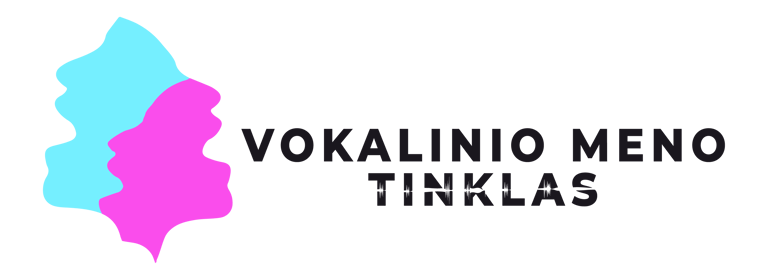Sonorous Frescoes: Through the Sounds of Kaunas Hansa
Imagine that you are a Hanseatic merchant in the city of Kaunas. You walk through the old town square, situated at the confluence of the Nemunas and Neris rivers, where goods are being traded and a wide variety of merchandise surrounds you. Suddenly, you notice a stall displaying only prices and labels indicating what can be purchased for each amount
6/5/2025


3.47 for a fragile, trembling moment before a decision is made—when the thought is already clear, but the path ahead is still vague! Here, you will hear the introductory piece by Vaidas Bartušas and Roberta Daugėlaitė, featuring an inversion of the melody from the distinguished Lithuanian composer Mikalojus Konstantinas Čiurlionis’ prelude VL 188.
12.37 for the moment when the first healing herbs bloom on barren land! Here you will hear Roberta Daugėlaitė’s composition illustrating a morning in Hanseatic Kaunas.
Sung text:
In the city of Kaunas, where the Nemunas flows,
A church tower shines bright.
The castle’s rule, the townsfolk’s speech—
All invite us to life’s great celebration.
Pro caelo praedicatoris (The preacher from the heavens). (by R.B.)
24 for a breath between day and night, birth and death!
Here you will hear a composition by Roberta Daugėlaitė and Vaidas Bartušas, based on the twelve-tone technique and the principle of 24-tone creativity.
A merchant speaks of what he sees:
Sung text:
Since early morning, the air breathes smoke and the scent of fried bacon.
The sun is only just rising above the Nemunas,
yet the market is already buzzing like a beehive.
By a small barrel of herring, I smell the sea—though I’ve never seen it.
They say they’re from Gotland,
where the water is saltier and life more expensive.
I walk on. The aromas of spices seize my nose.
Hams hang, greens and vegetables abound: turnips, cabbages, onions.
Noise! Chickens screech, ducks wriggle.
There—a horse. Graceful, with its mane tossed like a merchant’s cloak—
expensive, but worth it.
Not for me. I’m just a city man on foot.
Though maybe, one day…
Before I leave—I stop. A nun stands. Prayer book in hand.
A holy image softly speaks of soul, of silence.
The market—here lives both spirit and noise. (By V. B.)
15 for the transformation—when the inner self begins to negotiate with the world, when moving forward is not enough—you must sense, adapt, pause!
Here you will hear a blues-style recitative composition by Roberta Daugėlaitė and Vaidas Bartušas, reflecting the contemplations of a Hanseatic merchant from the city of Kaunas.
Sung text:
And once again – morning.
The rivers whisper softly, as if nothing had happened.
Tired.
But – happy.
That I am healthy. That I still breathe this morning breeze
that touches not the skin, but the thought.
This confluence – more than just a place.
Here not only waters meet,
but also the currents of my doubts and hopes.
In one – my fear of being deceived,
in the other – the belief that all of this has meaning.
The city behind me still sleeps.
The church bells are still silent.
Tired, but happy that I am well.
Today I want only one thing –
that in the evening I may sit here again
and know: another day has been overcome.
And the rivers still flow.
Φ (“the golden mean”) for cosmic harmony!
Here you will hear a composition by Roberta Daugėlaitė and Vaidas Bartušas, featuring live electronics and effects pedals.
Sung text:
1.61803398874989484820458683436563811772030917980576286213544862270526046281890244970720720418939113748475408807538689175212663386222353693179318006076672635443338908659593958290563832266131992829026788067520876689250171169620703222104314818015673996051870721134999999…
108 for the sacred resonance between different worlds!
Here you will hear an a cappella vocal composition by Roberta Daugėlaitė and Vaidas Bartušas, into which the sound of the organ gently flows.
3 for the balance between opposites and the Transformation into the New!
Here you will hear an organ solo composition by Roberta Daugėlaitė.
Many of you may be wondering: what do these numbers mean? Each number used in this program was chosen intentionally—they are symbols rooted in deep cultural, philosophical, or musical traditions. The numbers 3, 4, 7, and 12 come from Renaissance and Baroque thinking, where numbers were seen as signs of divine order and harmony. They resonated through musical forms, architecture, and the worldview of the time. 2 and 4 in the Classical era symbolized rationality, clear structure, and balance. 1 and 5, during the Romantic period, took on meanings of personal rebellion, freedom, and emotional expression. Φ (the golden ratio) stands for universal proportion, especially cherished by the Impressionists, who sought to reflect natural balance and the subtlety of sensation. 108 is a number with sacred roots in Eastern philosophy and musical traditions, later appearing in contemporary minimalist music as a symbol of cyclical meditation.
References:
Besant, A. (1910). The ancient wisdom. Theosophical Publishing House.
Eco, U. (1986). Art and beauty in the Middle Ages. Yale University Press.
Eliade, M. (1959). The sacred and the profane: The nature of religion. Harcourt, Brace & World.
Fink, R. (2005). Repeating ourselves: American minimal music as cultural practice. University of California Press.
Howat, R. (1983). Debussy in proportion: A musical analysis. Cambridge University Press.
Larson, K. (2012). Where the heart beats: John Cage, Zen Buddhism, and the inner life of artists. Penguin Press.
McClain, E. G. (1976). The myth of invariance: The origin of the gods, mathematics and music from the Rg Veda to Plato. Nicolas-Hays.
Miller, H. M. (1992). The golden section in music. Nova Science Publishers.
Rosen, C. (1971). The classical style: Haydn, Mozart, Beethoven. W. W. Norton & Company.
Taruskin, R. (2005). The Oxford history of Western music. Oxford University Press.
Yates, F. A. (1979). The occult philosophy in the Elizabethan age. Routledge & Kegan Paul.




















































































